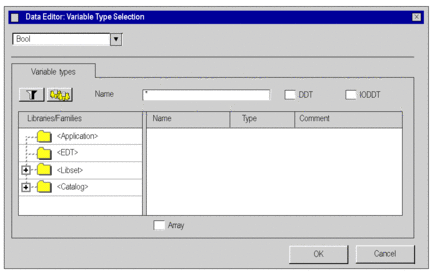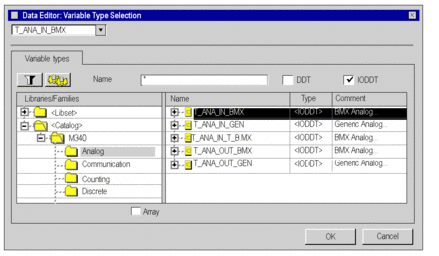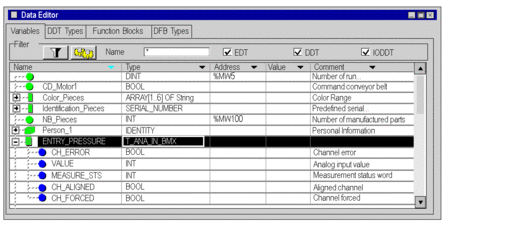Type IODDT instance
The data types (structures) have been predefined by the manufacturer and contain I/O language objects belonging to the channel of an application specific module (or the module itself).
Perform the following steps to create an IODDT instance:
Step |
Action |
|---|---|
1 |
Select the tab in the data editor. |
2 |
Double-click on the empty cell (marked with an arrow) and enter the name of the instance. |
3 |
Double-click on the corresponding field and click on it
 The following window appears.  |
4 |
In the area, display the index. The following window appears.  |
5 |
Select the Type of Controller, Function and the corresponding IODDT Type. Confirm with . |
Example: Instance ENTRY_PRESSURE of Type T_ANA_IN_BMX:

Linking to the application specific module
Step |
Action |
|---|---|
1 |
Select the tab in the data editor. |
2 |
Enable the IODDT checkbox, which will display instances of Type IODDT. |
3 |
Select the IODDT instance based on which the link will be created. |
4 |
Enter the address of the module or its future storage location in the column (it is not necessary to configure the module during this phase). Example:  |
Rules
Follow the rules below:
An IODDT data type cannot be nestled in a DDT data type.
An IODDT data type cannot be nestled in another IODDT data type.
A public or private variable of a DFB cannot be an IODDT type.
An input / output parameter of a DFB may be of Type IODDT. However, you can only use those IODDT types that are listed in the menu.
An IODDT instance cannot be accessed from a DFB section.


